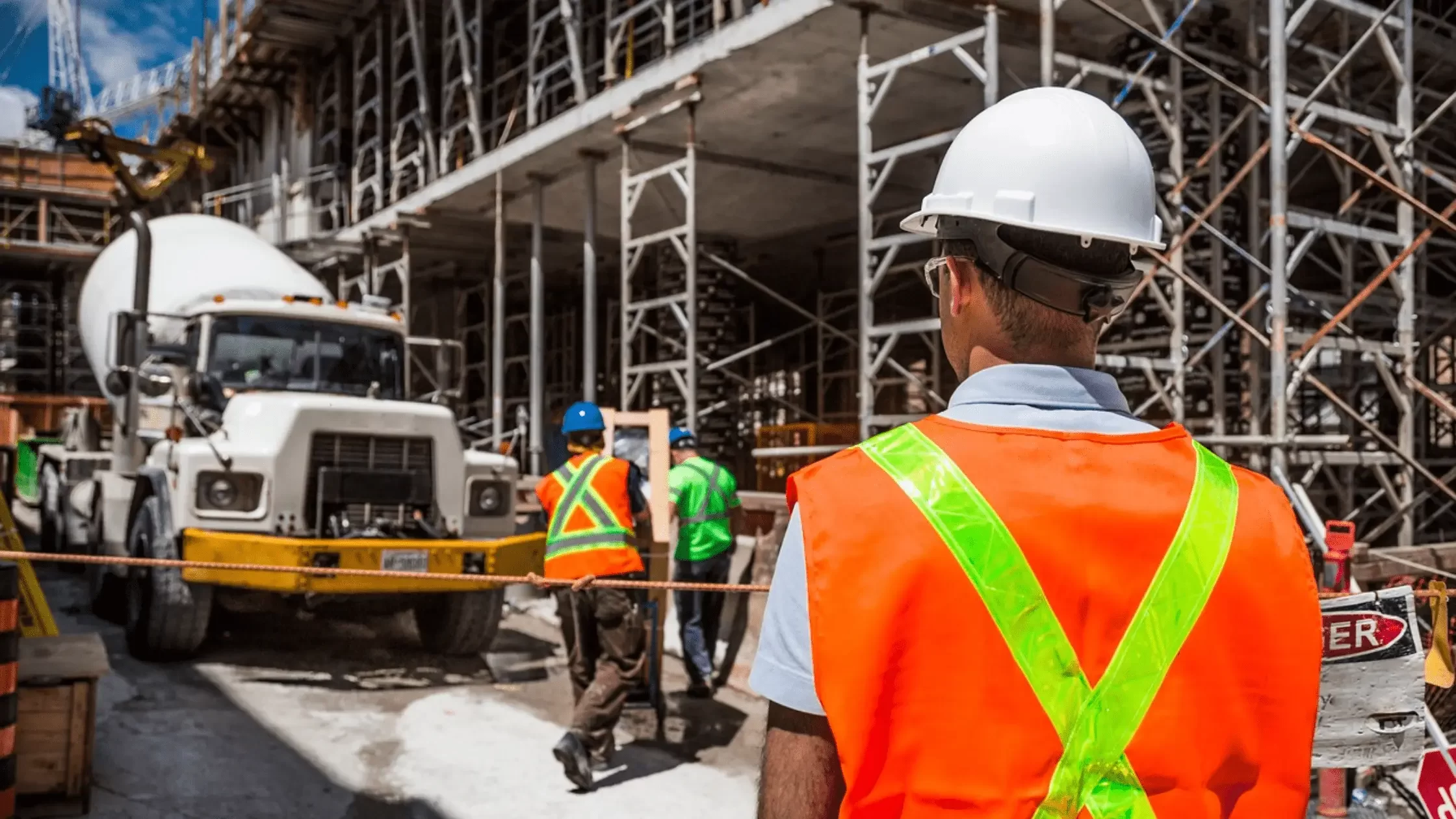Building Material Price Trends 2023: Market Analysis, Cost Trends, Price Forecasts, Industry Insights, Economic Factors
Importance of Building Material Price Trends
Keeping tabs on building material price trends is essential for anyone involved in construction. These trends can make or break project budgets, affecting everything from small residential builds to massive infrastructure projects. Understanding the nuances of these price shifts helps industry professionals make informed decisions, ensuring projects stay on track and within budget.
Overview of the 2023 Construction Market
The construction market in 2023 is a rollercoaster of highs and lows. With the lingering effects of the pandemic, supply chain disruptions, and economic uncertainties, predicting price trends is more challenging yet more crucial than ever. This year brings a mix of hope and caution, as the industry navigates through a post-pandemic recovery phase, facing new and ongoing challenges.
Market Analysis
Global Market Overview
Globally, the construction market shows resilience despite numerous challenges. Regions like North America and Europe are seeing steady growth, thanks to robust economic policies and infrastructure investments. Meanwhile, Asia-Pacific remains a powerhouse, though it faces unique challenges such as raw material shortages and logistic bottlenecks.
Regional Market Differences
Market behavior varies significantly across regions. For instance, North America enjoys relatively stable prices due to efficient supply chains and a strong economic environment. In contrast, regions like Asia-Pacific face more volatility due to their reliance on imported materials and less stable supply chains. Europe, on the other hand, is navigating through strict environmental regulations that influence material costs.
Key Drivers of Market Changes
Several factors drive the changes in the construction material market. Technological advancements, the growing demand for sustainable materials, and shifting economic policies are primary influencers. Additionally, global urbanization and infrastructure development projects continue to fuel the demand for construction materials, impacting their prices.
Cost Trends
Historical Cost Trends
Historically, building material costs have followed a cyclical pattern, influenced by economic booms and busts. Over the past decade, we’ve seen significant fluctuations, with prices often mirroring the global economic climate. Understanding these patterns helps stakeholders anticipate future trends and prepare for potential cost increases.
Major Fluctuations in 2023
The year 2023 has seen notable price fluctuations. Supply chain disruptions, increased transportation costs, and raw material shortages are the main culprits. For example, steel prices have surged due to high demand and limited supply, affecting construction budgets worldwide. These fluctuations underscore the importance of strategic planning and adaptability.
Comparative Analysis with Previous Years
Comparing 2023 with previous years, we see more volatility in the current market. The pandemic’s lingering effects, coupled with new geopolitical tensions, create an uncertain environment. However, advancements in construction technology and material science offer some stability and potential for cost reductions in the long run.
Price Forecasts
Short-Term Price Predictions
Short-term forecasts for 2023 indicate continued volatility in building material prices. Essential materials like steel and cement are expected to remain high due to ongoing supply constraints. However, efforts to stabilize supply chains might lead to moderate price reductions in the latter half of the year.
Long-Term Price Predictions
Long-term predictions suggest a gradual stabilization of material prices. As global economies recover and supply chains adapt to new challenges, prices are expected to normalize. Sustainable materials are likely to become more affordable as production scales up, driven by increased demand and technological improvements.
Influencing Factors for Price Changes
Several factors will influence future price changes. These include advancements in material technology, shifts in global economic policies, and the adoption of sustainable practices. Additionally, geopolitical developments and environmental regulations will play critical roles in shaping the cost landscape.
Industry Insights
Expert Opinions on Market Trends
Industry experts emphasize the importance of adaptability and innovation in navigating 2023’s market trends. Leveraging technology to improve efficiency and reduce costs is crucial. Experts also advocate for increased investment in sustainable materials as a long-term cost-saving strategy.
Impact of Technological Advancements
Technological advancements are transforming the construction industry. From 3D printing to advanced robotics, new technologies enhance material efficiency and reduce waste, leading to potential cost savings. These innovations also contribute to the development of new, cost-effective building materials.
Role of Government Policies and Regulations
Government policies and regulations significantly impact building material prices. Policies promoting sustainable construction practices and stringent environmental regulations can lead to higher material costs in the short term. However, these measures are essential for long-term sustainability and can drive innovation in material science.
Economic Factors
Impact of Global Economy on Building Material Prices
The global economy profoundly affects building material prices. Economic downturns typically lead to decreased demand and lower prices, while economic booms result in higher demand and increased costs. In 2023, the global economic recovery from the pandemic continues to influence material prices significantly.
Influence of Inflation and Interest Rates
Inflation and interest rates are critical economic factors that impact building material prices. High inflation rates increase the cost of raw materials and production, leading to higher prices. Conversely, lower interest rates can stimulate construction activity, increasing demand and subsequently raising material costs.
Currency Exchange Rates and Their Effects
Currency exchange rates also play a vital role in determining material prices, especially for imported goods. Fluctuations in exchange rates can make imported materials more expensive or cheaper, depending on the currency strength. This volatility requires careful financial planning for projects involving international procurement.
Material-Specific Trends
Cement Price Trends
Cement prices in 2023 are influenced by increased construction activity and supply chain disruptions. While demand remains high, production challenges and transportation issues contribute to price volatility. Efforts to develop alternative binding materials may offer some relief in the future.
Steel Price Trends
Steel prices have experienced significant hikes due to high demand and limited supply. Factors such as increased infrastructure projects and production bottlenecks in key exporting countries contribute to this trend. Long-term solutions include improving production efficiency and exploring alternative materials.
Timber Price Trends
Timber prices show a mixed trend, with certain regions experiencing sharp increases due to supply shortages and others seeing stabilization. Sustainable forestry practices and advancements in engineered wood products are expected to influence future price trends positively.
Aggregates Price Trends
Aggregates, essential for concrete production, face moderate price increases. Supply chain challenges and increased transportation costs are primary contributors. Innovations in recycling and alternative aggregates may help mitigate these price rises.
Innovative Materials Price Trends
Innovative materials, such as self-healing concrete and carbon-fiber composites, are gaining traction. While initially more expensive, their long-term benefits in durability and maintenance can offset higher upfront costs. Market adoption and production scaling are crucial for future price reductions.
Supply Chain Dynamics
Current Supply Chain Challenges
The construction industry faces several supply chain challenges in 2023, including material shortages, logistical bottlenecks, and increased transportation costs. These issues lead to project delays and higher costs, emphasizing the need for resilient and adaptable supply chain strategies.
Effects of Supply Chain Disruptions on Prices
Supply chain disruptions significantly impact material prices. Delays in material delivery and increased transportation costs drive prices up, affecting project budgets and timelines. Developing robust supply chain networks and contingency plans is essential for mitigating these effects.
Strategies to Mitigate Supply Chain Issues
Addressing supply chain issues requires a multifaceted approach. Diversifying supplier bases, investing in local production capabilities, and adopting advanced logistics technologies are crucial strategies. Collaborative approaches with suppliers and proactive inventory management also play vital roles in ensuring material availability and price stability. Leveraging predictive analytics to forecast demand and potential disruptions can further enhance supply chain resilience.
Sustainable Building Materials
Growing Demand for Sustainable Materials
The demand for sustainable building materials is on the rise, driven by environmental concerns and regulatory pressures. These materials, while sometimes costlier initially, offer long-term savings through improved energy efficiency and reduced environmental impact. As the industry shifts towards greener practices, sustainable materials are becoming more mainstream.
Cost Implications of Sustainable Choices
Choosing sustainable materials can lead to higher upfront costs, but these are often offset by long-term benefits such as lower maintenance expenses and enhanced building performance. Additionally, government incentives and growing market acceptance are making sustainable choices more financially viable. As more companies adopt these materials, economies of scale will likely reduce costs further.
Market Availability and Adoption Rates
Market availability of sustainable materials is increasing as demand grows. Advances in material technology and increased production capabilities are making these materials more accessible. Adoption rates are steadily climbing as more construction projects prioritize sustainability, driven by both regulatory requirements and consumer preferences.
Conclusion
Summary of Key Findings
Building material price trends in 2023 are shaped by a myriad of factors, including global economic conditions, technological advancements, and supply chain dynamics. While short-term volatility is expected, long-term trends point towards stabilization and increased adoption of sustainable materials.
Future Outlook for Building Material Prices
The future outlook for building material prices suggests a gradual normalization as economies recover and supply chains adapt. Technological innovations and sustainable practices will play crucial roles in shaping the market. Industry stakeholders must remain adaptable and proactive in their planning to navigate these changes effectively.
Final Thoughts on Market Preparedness
Preparing for market fluctuations involves strategic planning, investment in technology, and collaboration across the supply chain. By understanding the underlying factors driving material prices and adopting innovative solutions, industry professionals can better manage costs and ensure project success.
FAQs
1. How are building material prices expected to change in 2023?
Building material prices in 2023 are expected to remain volatile in the short term due to supply chain disruptions and economic uncertainties. However, long-term predictions suggest stabilization as global economies recover and supply chains adapt.
2. What are the main factors influencing building material prices?
The main factors influencing building material prices include global economic conditions, supply chain dynamics, technological advancements, and government policies. Inflation, interest rates, and currency exchange rates also play significant roles.
3. How do technological advancements impact material costs?
Technological advancements impact material costs by improving efficiency and reducing waste. Innovations like 3D printing and advanced robotics enhance production processes, potentially lowering costs and introducing new, cost-effective materials.
4. What role do government policies play in material pricing?
Government policies significantly influence material pricing through regulations, incentives for sustainable practices, and trade policies. Stringent environmental regulations can lead to higher costs, but incentives can offset these increases and promote innovation.
5. How can companies mitigate supply chain disruptions?
Companies can mitigate supply chain disruptions by diversifying supplier bases, investing in local production capabilities, adopting advanced logistics technologies, and leveraging predictive analytics. Proactive inventory management and collaboration with suppliers are also essential strategies.





